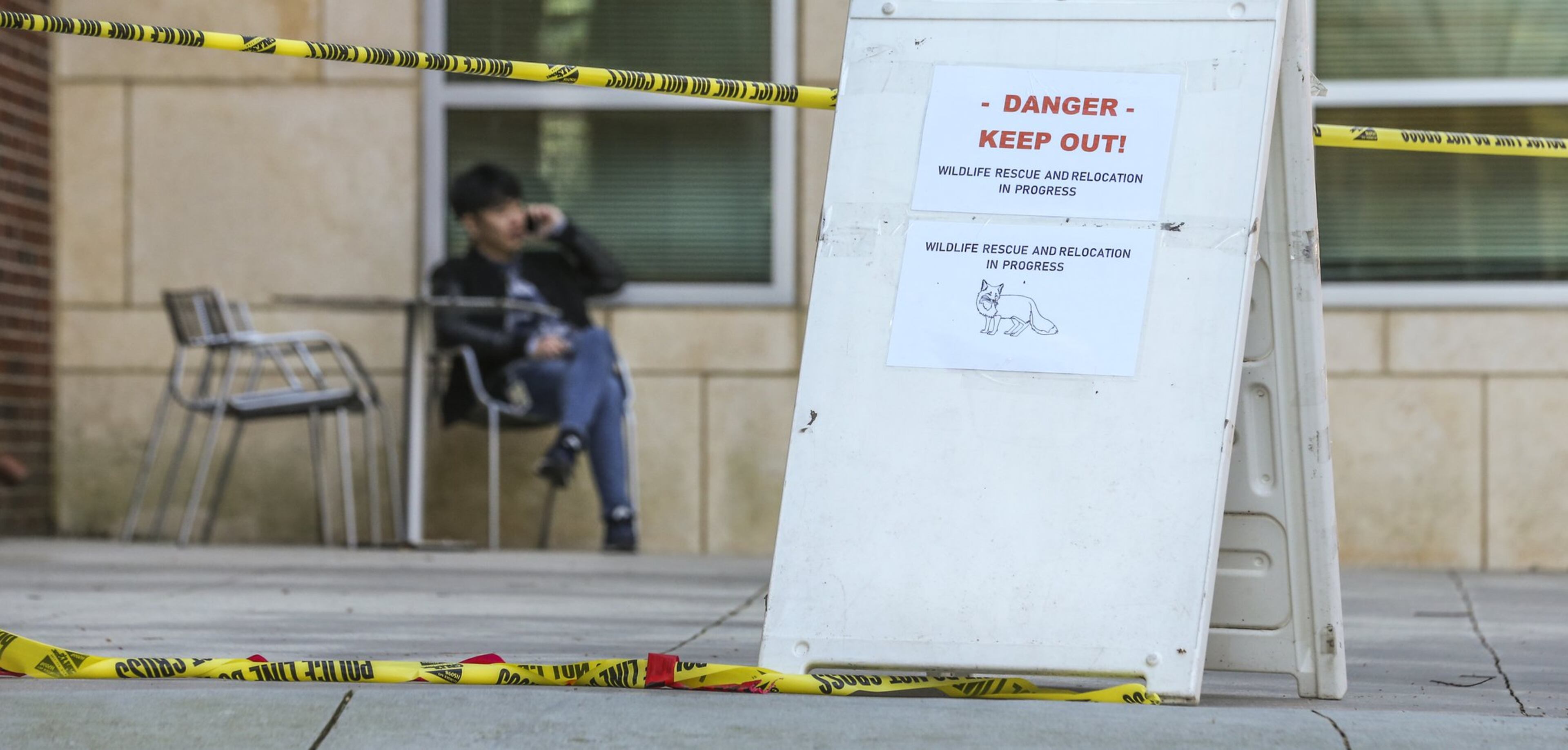Foxes - and rabies - pay visit to Georgia Tech’s Midtown campus

There’s more air-conditioned space than green space on the Georgia Institute of Technology’s campus, but foxes have found it to their liking.
One was captured last week near the tightly packed space between the George C. Griffin Track and the Ken Byers Tennis Complex after unprovoked attacks. One student was bitten on the thigh, and two had the animal grab their pants legs and not let go in separate attacks Friday.
On Sunday, another unprovoked attack left a student scratched on the hand, according to university spokesman Lance Wallace.
The fox was captured and tested positive for rabies, which can be spread by exposure to an infected animal’s saliva.
The students are undergoing post-exposure treatment, according to Wallace, and three of them have returned to classes.
“There are multiple foxes, we know that,” Wallace said, and the university is getting help to trap the others.
Georgia Tech officials roped off the concrete sidewalk splitting the sports venues and a home-lot sized collection of trees and bushes that have a great view of the skyline of high-tech companies clustering on Peachtree Street.
Students walking nearby Wednesday were nonplussed by the rabid fox encounter.
Thomas Waters, a senior, had seen foxes in the area as far back as a couple of years ago.
“I’d see them at night around the track,” he said.
Worried? Nope, he stopped to say, interrupting his skateboarding attempts to pull off a double-kick flip on the sidewalk in the area where the students were attacked.
“I’m a country boy,” from tiny Swainsboro, a few counties east of Macon.

Foxes, coyotes, raccoons and other animals may be more associated with Georgia’s bucolic landscapes, but they’ve also adapted to the concrete jungle, said I.B. Parnell, a wildlife biologist with the state Department of Natural Resources.
“Folks would be amazed where wildlife can make a living,” he said. And it can be a pretty good one at that, considering the free food — from bird feeders to unsecured garbage cans, soft-hearted citizens leaving out cat food for feral animals, pet owners feeding their animals outside and the mice, rats and birds that come to those sources.
Cutting out food sources and keeping pets vaccinated is key to keeping the critters away, he said.
People may be worried by spotting raccoons, ‘possums or larger animals such as coyotes and foxes, but danger from rabies is typically small, Parnell said. In his district, which stretches from downtown Atlanta to Augusta, he hears about maybe two to five cases a year.
In the last four years, the count of rabid animals reported to the Georgia Department of Public Health has held steady, ranging between 230 and 253. Skunks, raccoons, foxes and bats are the most common carriers. Though rabies was once more common in domestic animals, thanks to vaccinations and care, more than 90 percent of modern cases are in wildlife. In Georgia’s 247 reported cases in 2017, six were dogs and 10 were cats.
Though the cases are few, there is cause for concern. Rabies, untreated, is fatal in humans. There were three human deaths in the U.S. and Puerto Rico in 2015, the last complete year for numbers from Centers for Disease Control and Prevention. One of those cases was contracted overseas.
The cost of rabies treatment can exceed $3,000, according to the CDC.
The state DNR does not do removals, but Parnell said Georgians can use local animal control companies to trap and remove troublesome animals. Those concerned about animals that act aggressively or strangely should contact county health departments.
What should be done when a potentially rabid animal bites someone?
Clean the wound immediately with soap and water. Call your doctor quickly for advice. Provide your doctor with the following information:
1. Type of animal involved (pet or wild animal)
2. Provoked (teased, startled, run past, etc.) or unprovoked attack
3. Type of exposure (cut, scratch, licking of an open wound), part of the body, number of exposures
4. Animal’s vaccination status
5. Sick or well animal, type of symptoms
6. Whether the animal is available for testing or quarantine
Source: Georgia Department of Public Health

